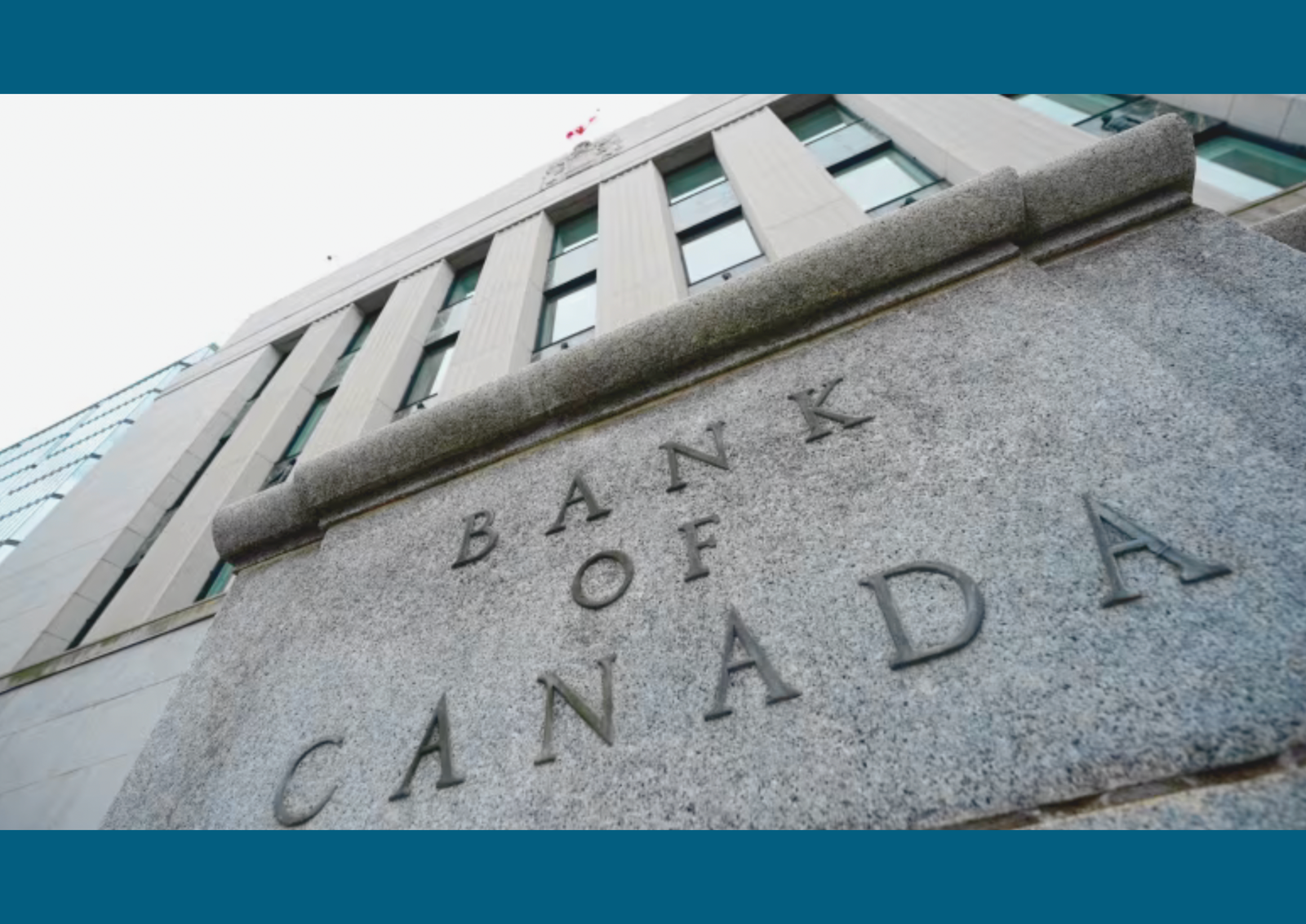
On Wednesday, the Bank of Canada opted to maintain its benchmark interest rate, signaling a continued stance on potential future hikes despite growing speculation of rate cuts in 2024.
In its third consecutive decision and the last rate announcement for 2023, the central bank held its policy rate steady at 5.0%. Notably, overall inflation experienced a significant drop to 3.1% in October from its peak at 8.1% in June 2022.
But the Bank of Canada’s governing council warned that it “remains prepared to raise the policy rate further” if it doesn’t see more signs of progress in its preferred core inflation metrics and other factors like wage growth, inflation expectations and consumer price setting behaviour (Lord, 2023).
The central bank's efforts to cool economic growth have included raising the policy rate by 4.75 percentage points since March 2022. This move aimed to temper spending, rein in demand, and elevate the cost of loans like mortgages for Canadians.
Tiff Macklem, the Governor of the Bank of Canada, echoed in a recent speech that the "excess demand" fueling inflation has been removed from the economy, a sentiment reflected in Wednesday's statement.
Benjamin Reitzes, managing director of Canadian rates and macro strategist at BMO Capital Markets, tells Global News that inflation is indeed likely to head “lower” in the months ahead with expectations the economy will continue to slow, “but that doesn’t mean it’s going to move in a straight line,” he warns, citing some possible bumps in the road back to the Bank of Canada’s two per cent inflation target, a goal it currently has set for mid-2025..
"Canada’s once-tight labour market has also shown signs of easing as of late as job gains fail to keep pace with rapid population growth, driving up the unemployment rate. However, the Bank of Canada continued to flag annual wage growth in the range of four to five per cent as something it’s keeping tabs on.
Reitzes says higher wages are the “big risk” for Canada’s inflation outlook right now, particularly given a Statistics Canada report also released Wednesday that showed productivity declined nationally for the sixth consecutive quarter.
Declines in productivity and rising wages mean it costs more for Canadian businesses to produce goods and services, which is “inflationary,” he explains. Macklem has warned in the past that elevated wages are not consistent with getting inflation back to two per cent unless they come with gains in productivity" (Lord, 2023).
When will the rate cuts begin?
"Avery Shenfeld, chief economist at CIBC Capital Markets, said in a note to clients on Wednesday morning that the Bank of Canada “toasted small victories” on the inflation front with its latest decision, but was not yet ready to drop its warning that rates could rise again.
“Current trends are clearly leaning away from that, and the bank’s nod to broader progress against inflation and the fact that the economy is no longer clearly overheated suggest that the central bank isn’t at this point really giving much thought to additional tightening,” he said.
Royal Bank of Canada economist Claire Fan also said in a note to clients on Wednesday that she’s expecting cuts to begin in the second half of 2024, though a steeper economic downturn could bring that timetable forward.
Other big Canadian banks are more ambitious with their rate cut forecasts.
TD Bank said Wednesday that the first interest rate cut from the Bank of Canada could come as early as April.
CIBC is a bit later, with Shenfeld saying Wednesday that the bank is eyeing cuts starting in June. But CIBC’s forecast sees a substantial drop in the policy rate of 1.5 percentage points before the end of 2024" (Lord, 2023).
How might the housing market react in 2024?
In a note on Wednesday, Derek Holt, the chief economist at Scotiabank, asserted that the Bank of Canada couldn't eliminate its guidance regarding the potential for higher rates without triggering a surge in bets on rate cuts within financial markets.
Holt pointed out that the bond market is already factoring in rate cuts for the upcoming year. Yields on the pivotal five-year Government of Canada bond have reversed course since an early fall surge and currently stand at their lowest level since May.
The movements in bond yields have a direct impact on fixed-rate mortgages offered by Canadian lenders. Decreasing yields signal the prospect of more favorable rates for homebuyers and those considering mortgage renewals.
According to Holt, the declining yields on the five-year Government of Canada bonds are occurring as Canadians secure mortgage pre-approvals in preparation for house hunting in the upcoming year. Furthermore, the positive trends in employment and higher wages this year position many Canadians favorably for potential involvement in a bustling spring housing market.
Reitzes observes that numerous housing markets in Canada are still advantageous for buyers, marked by limited competition amid elevated rates and a growing housing supply that is contributing to slow sales.
While a decline in the Bank of Canada's rates could potentially stimulate increased activity in the housing market, Reitzes cautions that such a scenario is likely contingent on further economic weakening. This could prompt many potential buyers to adopt a wait-and-see approach, particularly if their incomes face the risk of decline.
Lord, C. (2023).